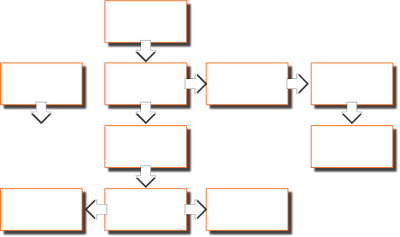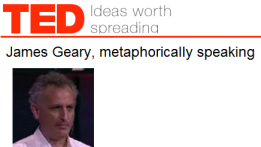Synthesis
Using metaphors in eLearning makes learners more receptive to ideas and information that are otherwise complex to figure out. These metaphors in presentation mode or self-contemplative mode make learners easily grasp needed knowledge and immediately adapt concepts thereby prompting a faster and better course of action.
What do we mean when we say “my computer is down” or “molecules act like boiling water”? We are exercising the power of metaphors.
From Newton’s clockwork theory to John Reeves’ Emoticons , metaphors have been used for purposes of communication for the longest time – whether it’s to communicate with each other, learn and even socialize in the new world of social media. So, what is a metaphor and how can we use them in eLearning programs?

A metaphor is the use of an object or idea to represent certain meanings which are otherwise difficult to explain.
Metaphors have fascinated cognitive scientists because they have the power to transform the way people think and how they respond. They allow large amounts of information to be retained, recalled and applied rapidly. Creating good metaphors requires skills which can be learned by eLearning designers and developers.
In the fast-paced learning environment where learners are highly distracted, busy and overloaded, the use of metaphors provide even greater value. Metaphors allow faster understanding of ideas and provide a more efficient way of recalling knowledge and information. Learners are usually engaged because they comprehend the meaning of the ideas at once.
Richard Feynman – Jiggling Atoms
An example of a great metaphor is Richard Feynman’s use of Jiggling Atoms to explain the physics behind a complex concept.

(Click here to preview Richard Feynman’s video)
Usages of Metaphors in e-Learning
• Explain new ideas in familiar ways – Introducing new ideas to learners requires a link from familiar to unfamiliar. Metaphors make it possible for learners to cognitively connect concepts and terms to their own context.
Example: The ‘horseless carriage’ and the ‘cordless phone’ connect the idea of technology to existing and familiar reference.
• Explain innovations by imitating nature’s model – Bio-mimicry is a method of transforming scientific concepts by using nature’s model as inspiration.
Example: Using caterpillars in constructing flexible all terrain robotic machine suited for Mars.
• Simplifying complex systems – Using analogies such as “waterfalls model” and “wheel spokes model” in elearning design.
Metaphors for eLearning
In my experience, there are two ways of using metaphors that help learners learn faster and better. The first is the presentation mode and the other is the self-contemplative mode.
The presentation method helps elearning designers develop lessons that translate their content into easier ways for learners to learn. By using any of the methods mentioned above, designers transform the way learners appreciate the content. This particular method is akin to a narrative, storytelling or teaching an idea.
The self-contemplative mode is when a designer incorporates in the design, a way to encourage the learners to share their own metaphors. The value of this mode is immersive learning. It helps learners create their own context and connect the content to what is immediately meaningful for them. This mode also assists learners to assimilate the concepts into their real-life work situation. Oftentimes, many eLearning designs are in presentation mode or the information dumping method which inhibits the learners from a deeper reflective thinking about the content.
Steps to discover and develop Metaphors
Although there are many sources of metaphors, there are steps which when followed can consistently inspire the use of metaphors for elearning.
1. Conduct a survey – determine associations
The first step is to identify a content that you feel may require a metaphor. Ask your learners, clients, and individuals with experience to suggest a metaphor. Ask the question, “what associations do you have with the content idea?” Oftentimes, people have associations that connect a concept and provide potential cognitive links to people’s experiences and understanding.

2. Work with SMEs – simplification
Engineers and subject matter experts spend countless hours wrestling with how to explain the ideas in simpler terms. Asking them “how they can simplify the concept” helps you discover the options on when and how to use a metaphor. Simplifying an idea often allows engineers to use explanations that are easily understandable, hence, making it accessible to learners. The iPod has undergone several iterations to provide more simplified models.

3. Conduct brainstorming focus group exercises – like analogy group thinking
Creative development can sometimes come from open-ended brainstorming exercises. Group thinking exercises can generate innovative metaphors. Encourage the group to imagine ways to express an abstract concept into a real world analogy. Ask “what-if questions” that also trigger metaphors. These questions help unearth parallel thinking and sharing of experiences. What are the options available? What’s next?

4. Test metaphor – instant recall
Select the metaphor that has high-experience and content idea connection. Try to express the metaphor in visual and verbal methods and see how quickly learners respond to it. Look for the “aha” effect – a sense of immediate connection between the learner’s appreciation of the metaphor and understanding of the idea. The “Fish in a bowl” tells how narrow minded our views can be.

5. Incorporate metaphors into elearning lessons – selectively
Metaphors can be positioned effectively by using them in exercises, games, demonstration, animation and simulation. Care should be taken to integrate the metaphor seamlessly. The singular test is to discern if the metaphor can serve as an effective replacement representation of the concept. For example in elearning design, we refer to the “waterfall model of design” to mean “linear design.”

Conclusion
Applying Metaphors for elearning brings about a welcome relief to complex and difficult concepts that learners are trying to unravel. While it’s true that metaphors in presentation methods translate contents thru a narrative or storytelling which helps learners appreciate the content of an idea, more value to elearning is added thru the self-contemplative mode of using metaphors where learning is more immersive and assists learners to integrate concepts into their real life work situations. This helps us avoid the concept of information dumping which can be overwhelming. In the midst of information overload, metaphors help learners take and use concepts quicker and better.

Preview the video by James Geary on Metaphors. (Click here)

Preview this interesting video on how to construct a metaphor. (Click here)
Related Blogs
Inspire others – be a Master Storyteller -Study the Profile and Survey
How to instantly grab e-learners attention!
How to Embed Learning Goals in Stories
Ray Jimenez, PhD
Vignettes Learning
“Helping Learners Learn Their Way”
